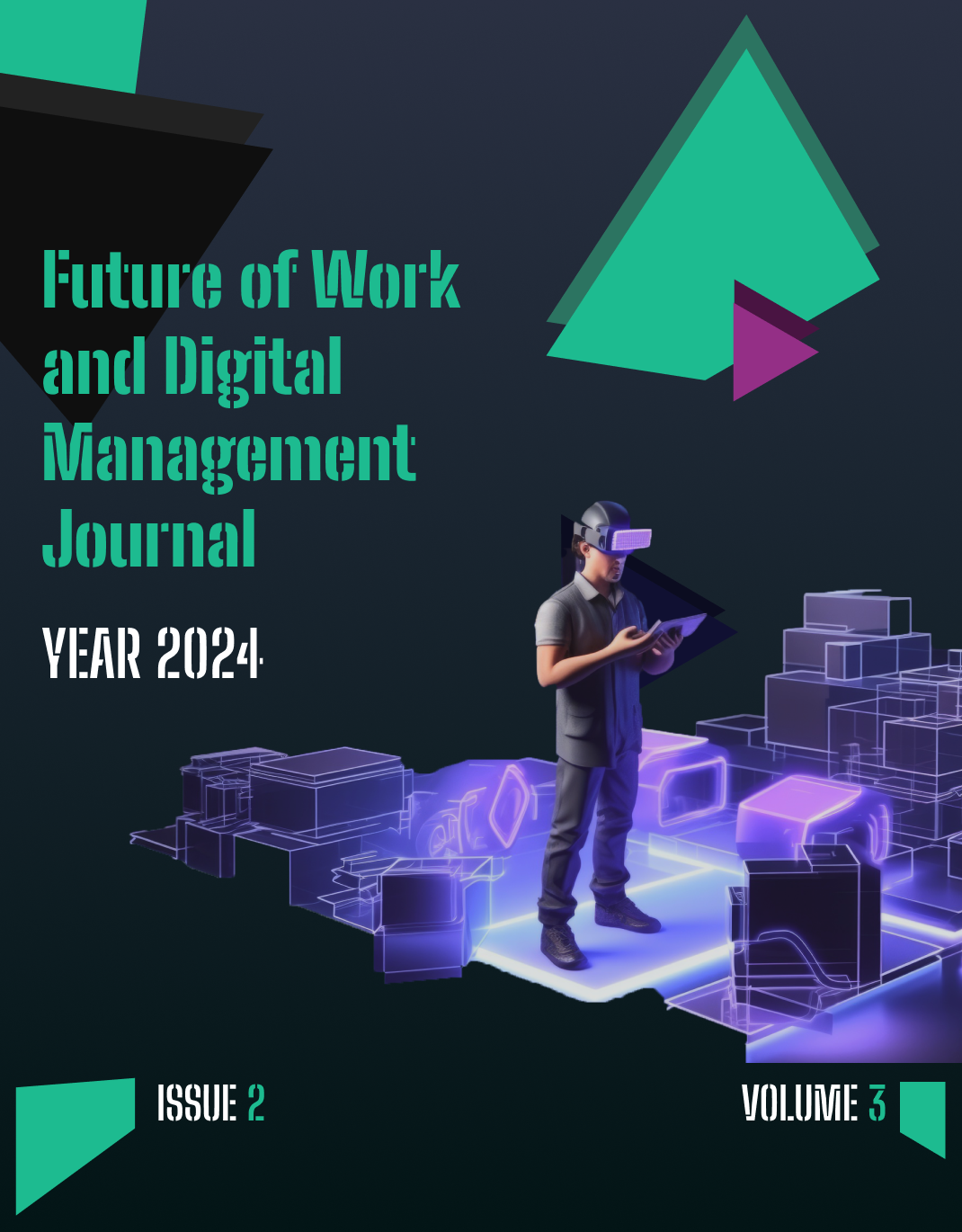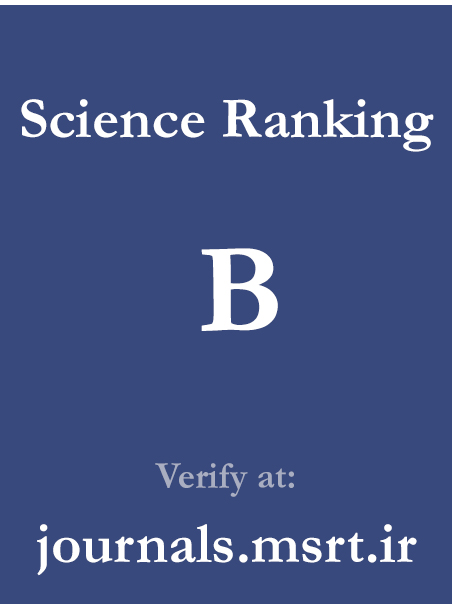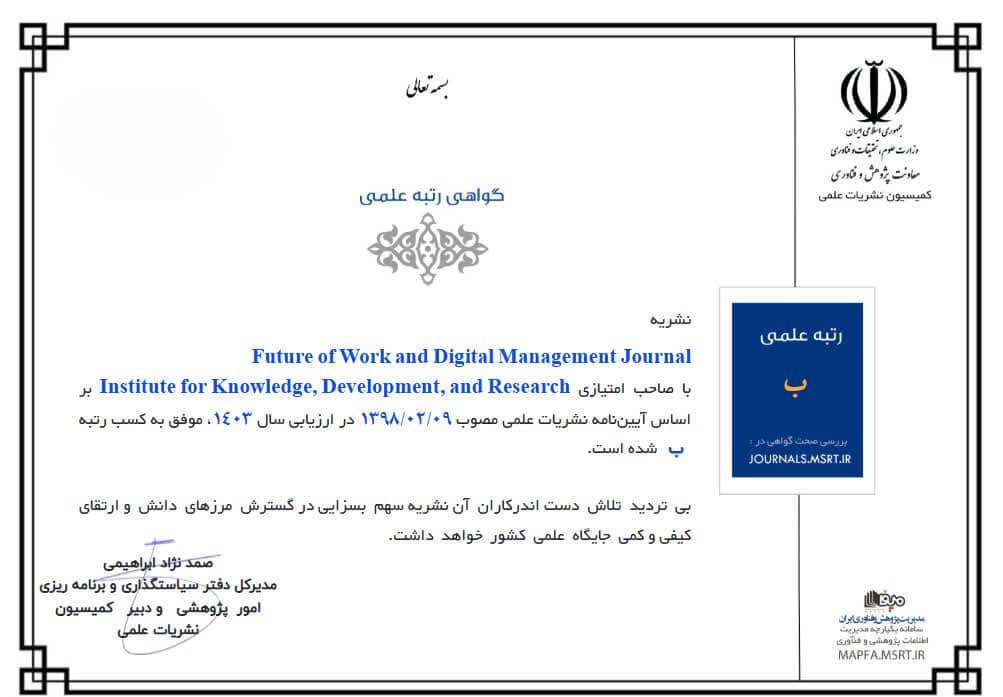The Impact of the Dimensions and Consequences of Human Resource Management Development on the Performance Gap in the Social Security Organization
Keywords:
Human Resource Management Development, Performance Gap, Consequences, Dimensions, Social Security OrganizationAbstract
The present study examines the impact of the dimensions and consequences of human resource management (HRM) development on the performance gap in the Social Security Organization. The research is applied in terms of purpose and descriptive–survey and causal in nature. The information was collected through a library method, and the required data were obtained by note-taking from books, articles, theses, and other relevant sources. The statistical population consisted of employees and managers of the Social Security Organization. The sampling method was simple random sampling, and due to the unknown size of the population, the sample size was determined to be 384 individuals. Data collection in the field was carried out using a researcher-made questionnaire. Data were analyzed using descriptive statistics (mean and standard deviation), inferential statistics, and structural equation modeling with the use of SPSS 26 and AMOS 24 software. The findings indicated that both the dimensions of HRM development and its consequences have significant effects on the factors influencing the performance gap, including human resources, organizational structure and processes, external environment, and managerial factors. The results further revealed that the dimensions and consequences of HRM development can play a significant role in reducing the performance gap within the Social Security Organization.
Downloads
References
[1] M. Armstrong, Strategic Human Resource Management (A Guide to Action), Translated by S. M. Ā'rābi and O. Mahdīyeh. 9th ed. Tehran: Cultural Research Bureau, 2021.
[2] Steffi.R, S. S. Rajest, S. T, and R. Regin, "The Effects Of Effective Management of Human Resources On The Overall Performance Of An Organization," Central Asian Journal Of Mathematical Theory And Computer Sciences, vol. 4, no. 1, pp. 1-20, 2023.
[3] S. Mašāyekhī, M. Ṣāleḥī, and T. Enāyatī, "Identifying the Performance Gap Model in the Iranian Social Security Organization to Change the Approach in Conventional Training," Quarterly Journal of Human Resource Training and Development, vol. 5, no. 17, pp. 1-28, 2018.
[4] M. Gholīzādeh, R. Zūlfaqārī Za'farānī, and M. Moḥammadiyān Sāravī, "Presenting a Human Resource Development Model with a Focus on Productivity in the National Tax Affairs Organization Using the Structural Equation Modeling Approach," Quarterly Journal of Innovation and Value Creation, vol. 10, no. 19, pp. 185-203, 2021.
[5] H. Khānī and F. Morādī, "Investigating the Role of Performance Appraisal and Organizational Learning in the Development of Green Human Resource Management of the Ministry of Culture and Islamic Guidance," Journal of Green Management, vol. 1, no. 3, pp. 93-108, 2022.
[6] H. Ahmadi Khaṭīr, M. Tabarī, and M. R. Bāqerzādeh, "Designing a Performance Evaluation Model in the Social Security Organization," Scientific Journal of Management Accounting, vol. 15, no. 2, pp. 49-62, 2022.
[7] A. Purwanto, J. Tampil Purba, I. Bernarto, and R. Sijabat, "Investigating the role digital transformation and human resource management on the performance of the universities," International Journal of Data and Network Science, vol. 7, pp. 2013-2028, 2023, doi: 10.5267/j.ijdns.2023.6.011.
[8] A. Kūlak, H. Sulṭānī, S. Maddāḥiyān, M. M. Bāqerī, and N. Fāteḥī Rād, "Designing and Validating a Comparative Model of the Impact of Human Resource Management (HRM) on Organizational Performance from the Perspective of Managers and Employees," Scientific-Research Bi-monthly of New Approach in Educational Management, 2022.
[9] P. Garengo, A. Sardi, and S. Nudurupati, "Human resource management HRM) in the performance measurement and management (PMM) domain: a bibliometric review," International Journal of Productivity and Performance Management, vol. 71, no. 7, pp. 3056-3077, 2022, doi: 10.1108/IJPPM-04-2020-0177.
[10] H. Yūsefī, M. H. Īmānī Khūškhū, and M. Jahāniyān, "Compiling a Human Resource Management Development Model in Hotels with an Entrepreneurial Approach," Tourism and Development Quarterly, 2022.
[11] V. Alīpūr and A. Mehrī Bāghghal'eh, "Explaining the Role of Human Resource Management (HRM) on the Performance of Industrial and Commercial Companies in Qazvin Province with an Emphasis on the Mediating Role of Business Strategy," Executive Management Research Journal, vol. 14, no. 28, pp. 143-165, 2021.
[12] D. Enos, Performance Improvement: making it happen. New York: Taylor & Francis Group, 2007.
[13] A. Ghanīzādeh, R. Nūrī, A. Ḥasanpūr, and Y. Vakīlī, "Pathology of the Performance Management System of Iranian Public Sector Organizations," Journal of Public Organizations Management, vol. 10, no. 1, pp. 47-66, 2021.
[14] F. N. K. Otoo, "Human resource development (HRD) practices and banking industry effectiveness: The mediating role of employee competencies," European Journal of Training and Development, vol. 43, no. 3/4, pp. 250-271, 2019, doi: 10.1108/EJTD-07-2018-0068.
[15] S. K. Singh and A. P. Singh, "Interplay of organizational justice, psychological empowerment, organizational citizenship behavior, and job satisfaction in the context of circular economy," Manag. Decis., vol. 57, pp. 937-952, 2019, doi: 10.1108/MD-09-2018-0966.
[16] V. Beygi and Ā. Gholīpour, "Human Resource Development (HRD) Using an Individual Development Plan (IDP) in Project-Based Organizations," Journal of Public Administration, vol. 8, no. 1, pp. 15-32, 2016.
[17] A. Delāvar, G. R. Maḥmūdī, and E. Shams, "Performance Evaluation of Tehran Emergency Medical Technicians in 2012," Psychological Research Journal, vol. 6, no. 22, pp. 1-19, 2014.
[18] K. Parsakia, "Resource Management Strategies in the Hospitality Industry: Balancing Profit and Sustainability," Journal of Resource Management and Decision Engineering, vol. 2, no. 4, pp. 17-23, 05/09 2024. [Online]. Available: https://journalrmde.com/index.php/jrmde/article/view/34.
[19] S. Dash and U. C. Pati, "The Effect of HRD Practices for High-Performance Work Systems: AnEmpirical Study on IT Industries inIndia," Revista ESPACIOS, vol. 39, no. 41, pp. 1-15, 2018.
Downloads
Published
Submitted
Revised
Accepted
Issue
Section
License
Copyright (c) 2024 Mohammad Ebrahim Javaheri , Alireza Rousta , Azadeh Ashrafi (Author)

This work is licensed under a Creative Commons Attribution-NonCommercial 4.0 International License.








